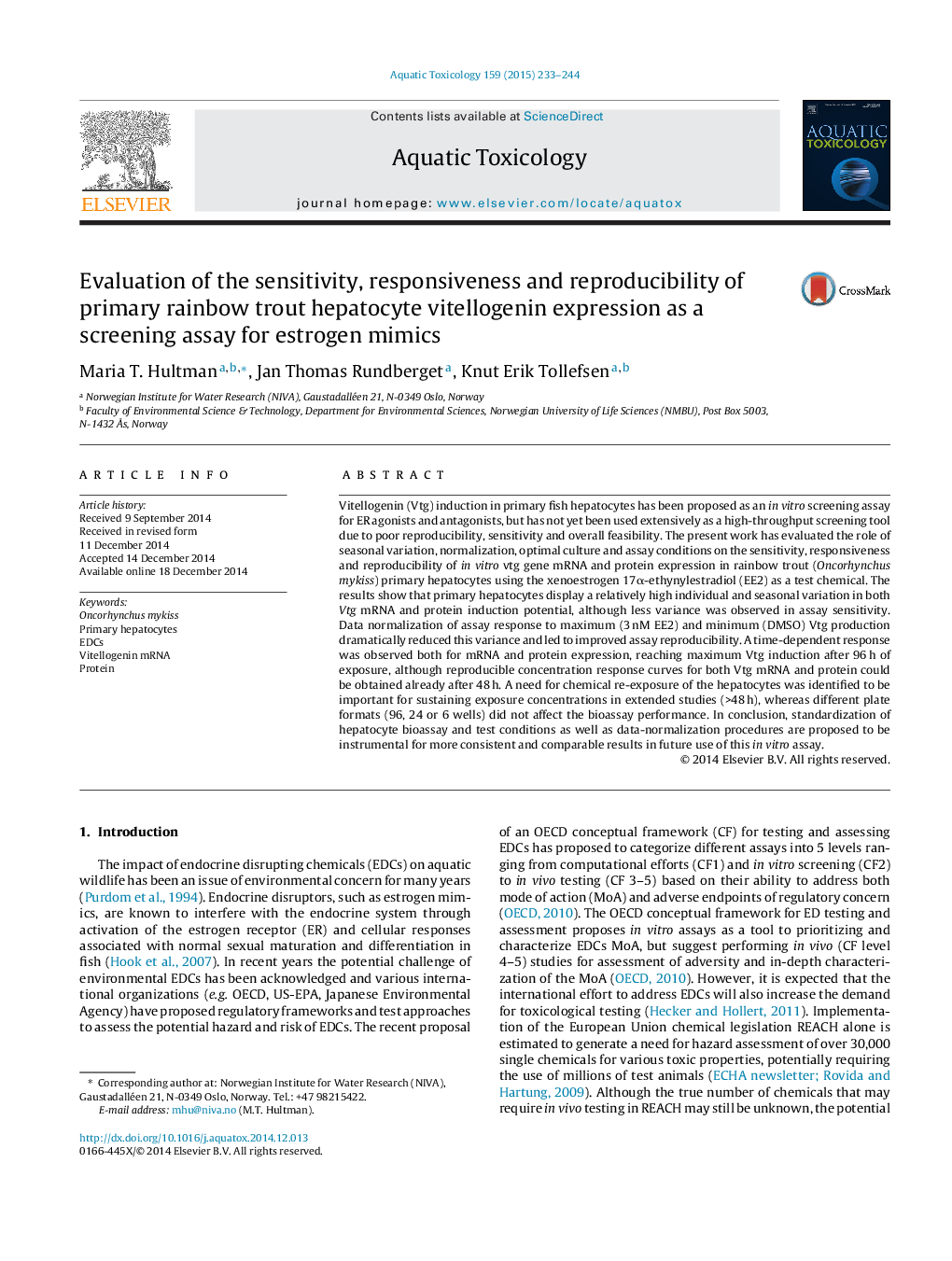| Article ID | Journal | Published Year | Pages | File Type |
|---|---|---|---|---|
| 6382313 | Aquatic Toxicology | 2015 | 12 Pages |
â¢Primary hepatocytes show high reproducibility and sensitivity to ethynylestradiol.â¢Temporal variance in Vtg gene and protein expression was observed in hepatocytes.â¢Optimal exposure duration was identified for both gene and protein expression.â¢Bioassay performance is dependent on bioassay factors and normalization procedures.â¢Standardization of bioassay protocols would reduce inter-laboratory variability.
Vitellogenin (Vtg) induction in primary fish hepatocytes has been proposed as an in vitro screening assay for ER agonists and antagonists, but has not yet been used extensively as a high-throughput screening tool due to poor reproducibility, sensitivity and overall feasibility. The present work has evaluated the role of seasonal variation, normalization, optimal culture and assay conditions on the sensitivity, responsiveness and reproducibility of in vitro vtg gene mRNA and protein expression in rainbow trout (Oncorhynchus mykiss) primary hepatocytes using the xenoestrogen 17α-ethynylestradiol (EE2) as a test chemical. The results show that primary hepatocytes display a relatively high individual and seasonal variation in both Vtg mRNA and protein induction potential, although less variance was observed in assay sensitivity. Data normalization of assay response to maximum (3 nM EE2) and minimum (DMSO) Vtg production dramatically reduced this variance and led to improved assay reproducibility. A time-dependent response was observed both for mRNA and protein expression, reaching maximum Vtg induction after 96 h of exposure, although reproducible concentration response curves for both Vtg mRNA and protein could be obtained already after 48 h. A need for chemical re-exposure of the hepatocytes was identified to be important for sustaining exposure concentrations in extended studies (>48 h), whereas different plate formats (96, 24 or 6 wells) did not affect the bioassay performance. In conclusion, standardization of hepatocyte bioassay and test conditions as well as data-normalization procedures are proposed to be instrumental for more consistent and comparable results in future use of this in vitro assay.
